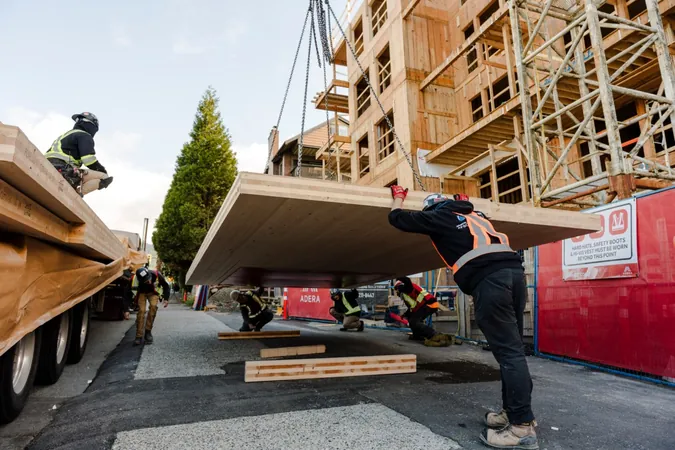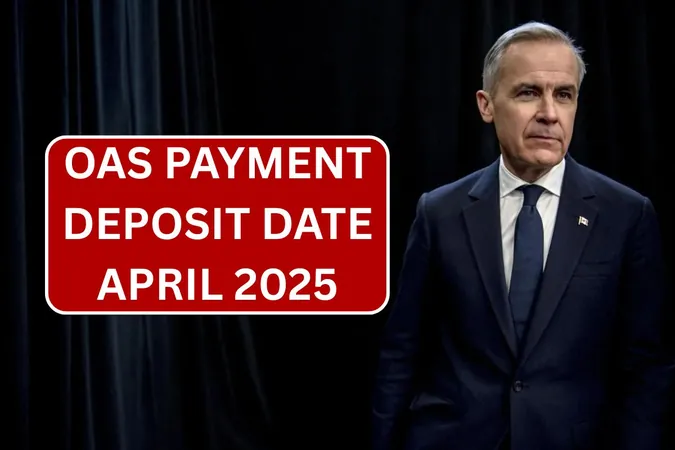
How a Trade War Could Spark a Mass-Timber Revolution in B.C.
2025-04-14
Author: Emily
With U.S. tariffs squeezing Canadian softwood lumber out of the market, a golden opportunity is emerging for British Columbia's homebuilders to vastly expand mass-timber construction, according to a prominent developer.
Adera Development, based in Vancouver, is championing this shift and has noted, "With tariff threats impacting lumber exports, this presents a unique opportunity to harness B.C.'s lumber industry to fuel the rise of mass-timber construction locally," in a recent announcement.
The Case for Mass Timber: Affordable and Eco-Friendly
Mass-timber buildings are not just trendy; they are often less expensive and feature lower carbon footprints compared to traditional concrete constructions. While they may initially cost more than conventional wood-framed structures, their efficiency during construction could balance those costs.
Eric Andreasen, Adera's Senior Vice-President of Sales and Marketing, explains that mass timber components are engineered off-site from multiple layers of wood, which can save substantial time and labor. "These components can be delivered and assembled quickly, like Lego pieces," he added.
Embracing Sustainable Innovation
Despite current limitations capping mass-timber applications at 18 stories, Andreasen believes that integrating these structures with high-performance heating, insulation, and appliances can create truly sustainable buildings. He emphasized, "The number one thing for sustainability is mass timber. Straight out of the gate, that’s the number one." In his view, mass timber could be the defining building material of the 21st century, with the potential to combat climate change.
Trade Tensions and Local Opportunities
If the U.S. tariffs materialize, the total levy could reach an eye-watering 45-55%. This may lead to an influx of lumber in B.C., driving costs down and creating a favorable environment for mass timber.
A report from Clean Energy Canada supports this shift, stating that using lower-carbon materials doesn't have to inflate housing prices and can bolster Canadian industries amidst rising tariffs. Notably, the report revealed that building with eco-friendly materials could reduce emissions significantly without substantial cost increases.
The Bottom Line: Sustainable Construction is Affordable
The study highlighted potential emissions reductions of up to 32% for concrete and radical savings for other materials like structural steel and insulation—often without increased costs. Small surcharges, when they exist, usually add less than $3,000 to material budgets, a minor expense relative to multi-million-dollar construction projects.
In conclusion, transitioning to mass timber not only holds the key to sustainable building practices but also presents an appealing economic opportunity for B.C. as it navigates complex trade landscapes.









 Brasil (PT)
Brasil (PT)
 Canada (EN)
Canada (EN)
 Chile (ES)
Chile (ES)
 Česko (CS)
Česko (CS)
 대한민국 (KO)
대한민국 (KO)
 España (ES)
España (ES)
 France (FR)
France (FR)
 Hong Kong (EN)
Hong Kong (EN)
 Italia (IT)
Italia (IT)
 日本 (JA)
日本 (JA)
 Magyarország (HU)
Magyarország (HU)
 Norge (NO)
Norge (NO)
 Polska (PL)
Polska (PL)
 Schweiz (DE)
Schweiz (DE)
 Singapore (EN)
Singapore (EN)
 Sverige (SV)
Sverige (SV)
 Suomi (FI)
Suomi (FI)
 Türkiye (TR)
Türkiye (TR)
 الإمارات العربية المتحدة (AR)
الإمارات العربية المتحدة (AR)